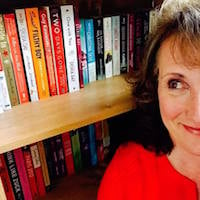Updated January 21, 2025
As a romance author, you’re given a wonderful opportunity to speak to readers on an intimate level. Every time they purchase one of your titles, they’re inviting you into their lives and admitting their (sometimes very secret) fantasies and desires. Take this role seriously and use these five essential strategies for selling romance novels and building your return fan base.
How to Sell Romance Novels
1. Draw buyers in with your cover.
2. Seal the deal with an irresistible book description.
3. Prove why you’re worth following.
4. Give readers something to look forward to.
5. Remember—it’s all about branding.
1. Draw buyers in with your cover.
Book covers are important in all genres, but they can really make or break your book in the romance category.
An effective cover should look like it belongs on the bestseller list. Yes, there are fads and trends in genres, but quality never goes out of style. A really excellent book cover looks like it could be in the number one spot tomorrow without even knowing what the book is about or if the reviews are any good. Yes, covers have that kind of power.
It should also effectively communicate the tone of your story and who your audience is.
All of these covers are from books that have topped romance charts. They’re all different from each other but still, very effectively communicate the tone of the book, and potential buyers are getting a taste of what they can expect if they buy a copy.
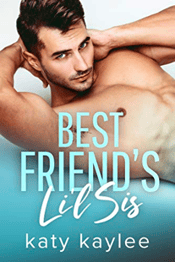
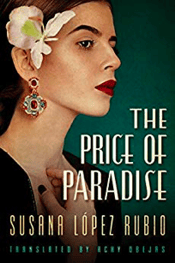
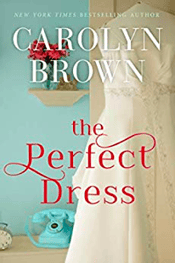
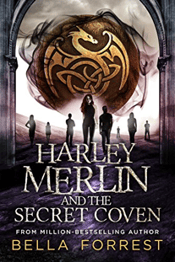
If you feel like sales are lackluster, you should consider whether or not your cover is up to par for today’s standards. Something as simple as a cover update can save you a lot of time and money on other book marketing strategies that will continue to fall flat because you’re not setting your book up for real success.
2. Seal the deal with an irresistible book description.
A well-designed book description is a close second to your book cover when it comes to what really closes the sale with shoppers.
And I say well-designed instead of well-written on purpose!
I’ve read great book descriptions that aren’t formatted properly, and I’m willing to bet these authors are losing sales by the day. Not only does proper formatting work with the psychology behind what makes people buy, but it also helps shoppers scan for stand-out selling points. Big blocks of text definitely don’t do that.
Here’s a short checklist I use to assess whether or not the formatting of a romance book description is working to convert shoppers to buyers:
- Leads with a seriously enticing opening sentence
- Uses bolding and italics
- Uses multiple paragraphs, with no more than 3 sentences each
- Includes a stand-out review excerpt
- Includes award wins and/or nominations
- Mentions the series, if applicable
On the other hand, I’ve also read romance book descriptions that are formatted correctly, but they just don’t sell the book.
Here’s a short checklist I use to assess whether or not the description of a romance book is working to convert shoppers to buyers:
- It's not just a synopsis of the entire book
- It uses creative descriptors
- It includes a teaser or cliffhanger
- It makes the storyline or characters relatable in some way
- It uses bolding to highlight what makes the book special
- It subtly implies the ending meets genre expectations
We’re often too close to our own work to write our own book descriptions. Yes, you can start it or create a working outline, but I strongly encourage you to have an editor or a marketing person give you feedback. And, if possible, have another romance author share their feedback. All three of these individuals will give you really unique input on what they feel works, and you should take all of it into consideration when developing the final description that goes on your website and in your book metadata.
3. Prove why you’re worth following.
One of the most overlooked features of a romance author’s sales arsenal is their bio. Yes, you read that correctly.
Too often, I see authors defaulting to a short resume or an overly basic “here’s me in 280 characters or less.” Romance readers need a much stronger connection than that!
Your bio is a chance to tell them why you write romance, share the book that inspired it all, and talk about why you’re also a fan. If your personal life is at all relatable to the sub-genre you write in, by all means, make that connection obvious! You want to be likable; you want to seem real. You want to be someone they feel confident investing time and money in.
Wasting a good sales opportunity by not taking your bio seriously and having some fun with it will definitely hurt your overall sales potential in the long run.
4. Give readers something to look forward to.
Romance readers are voracious! Once you capture their attention, they'll want to read your other books. If you don’t have an aggressive publishing schedule already outlined, get on it.
This piece isn’t about publishing strategy—but if you’re feeling pressed for time, don’t overlook the power of the novella when it comes to meeting deadlines. Yes, you can do discounts and giveaways and show up all over social media, but one of the best sales tools to capture the attention of your potential buyers is the promise of your next book.
Establishing a publishing schedule, sticking to it, and promoting it, is really the backbone of a romance author’s long-term sales potential.
Tying this back into earlier tips—you can get creative by highlighting upcoming releases in your book descriptions and in your bio! It may seem like overkill, but shoppers want to make confident, easy buying decisions, so repeating key information in multiple locations across your platform actually serves to create those much-needed impressions everyone talks about.
5. Remember— it’s all about branding.
A romance author’s brand could be an entire topic in and of itself, but I want to tie this into everything else I’ve already covered.
Branding is established through the details.
This means if you have a backlist of titles that you hope will continue to sell books, you need to make the necessary updates and improvements across the board:
- Update your bio for all your titles. If you write in multiple sub-genres, don’t miss the opportunity to speak to those unique readers with clever variations.
- Update your book descriptions. Use the points I’ve highlighted above and enlist the help of an editor or author friend to gain some perspective. Believe it or not, your formatting choices can help solidify your brand as well and make your products uniquely recognizable to shoppers.
- Find creative ways to work in your keywords and other great insight that maybe ends up on the cutting room floor after updating your descriptions. You can design your own Q&A as a way to share more about yourself, whom you write for, and what makes you and your work special. It’s unexpected, and it goes a long way.
- Your covers also play an important role in your brand as a romance author. If you look at your collective titles online, do they look like they came from the same person? Or are they a mishmash of different designers and different moods, and different phases of your publishing career? Now is the time to take yourself seriously enough to do an overhaul. Find a designer that specializes in your particular sub-genre and start getting quotes for bulk upgrades across the board. At a minimum, ensure all your series covers look alike, and the titles are all consistent with mentions of the series order. Start there – and once these efforts start moving the sales needle, I’m convinced you’ll be inspired to tackle all your titles!
Take IngramSpark's Free Online Self-Publishing Course, How to Build an Author Platform
If you've chosen to write and sell romance novels, you have a wonderful opportunity to build up a fan base of loyal readers. Let your creativity flow, and follow the steps above to maximize your sales potential!




